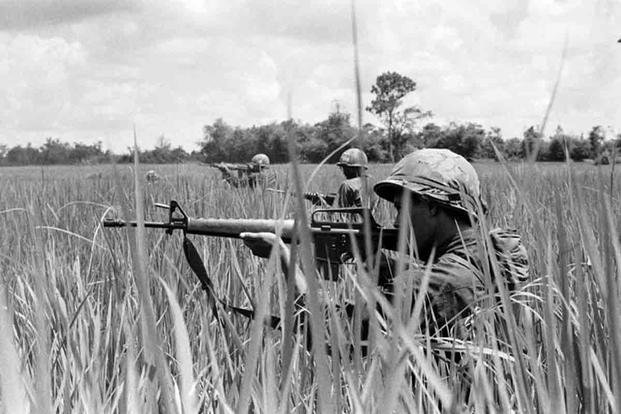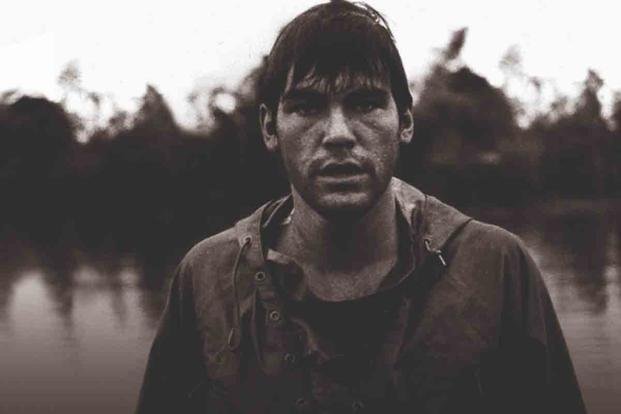Oliver Stone is one of Hollywood's most accomplished filmmakers, writing, directing and producing more than 32 films and television shows over a career spanning some 50 years.
Before he began his silver screen career, however, he signed up for the U.S. Army and asked for a combat deployment to Vietnam, which the Army was more than happy to provide. His service in the Vietnam War would later color his onscreen work, especially the 1986 movie, "Platoon."
"Platoon" was a film based on Stone's own experience in Vietnam. When it was first released, his fellow Vietnam War veterans described it as the first "real" Vietnam War movie. John Wheeler, veteran and president of the Center for the Study of the Viet Nam Generation, said of the movie, "It is part of the healing process. It speaks to our generation. Those guys are us."
In October 2020, Stone released a memoir, "Chasing the Light: Writing, Directing, and Surviving Platoon, Midnight Express, Scarface, Salvador, and the Movie Game." In it, he talks about not just his filmmaking career, but also his military career -- including his Vietnam service.
Stone enlisted in the Army in 1967, and after requesting a combat assignment, he was sent to South Vietnam, arriving on Sept. 16, 1967, with the 3rd Battalion, 25th Infantry, near the country's border with Cambodia.

He would earn the Bronze Star with Valor with the 25th Infantry, operating in that area. His unit was ambushed on a patrol, and the ambush had killed its lieutenant, one of its NCOs and its scout dog, a German Shepherd. During the hailstorm of bullets, Stone moved on the enemy.
"Maybe I was just cold and angry about the dog's death or the futility of it all. Or maybe I just had a headache, and the sun was burning too hot in my eyes. ... All I knew was that this was my moment to act," he wrote.
The future director advanced on an enemy spider hole between two American platoons, one in which he "sensed" an enemy soldier was hiding. Stone lobbed a grenade into the hole from 15 yards away, a move he said was risky because missing the shot meant harming his fellow soldiers.
"But it was a perfect pitch," wrote Stone, "and the grenade sailed into the tiny hole like a long throw from an outfielder into a catcher's mitt, followed quickly by the concussed thump of the explosion. Wow. I'd done it!"

He was then transferred to the 1st Cavalry Division and assigned to a Long Range Reconnaissance Platoon (LRRP). It was with this unit that he survived an all-night human wave attack.
He says such attacks were very rare in Vietnam because the enemy was not interested in a tactic that would cause so many casualties. But Stone says this particular event occurred because they were moving men and material along the Ho Chi Minh Trail while preparing for the Tet Offensive.
"Soldiers might say it was hell," Stone writes. "But I saw it as divine. As close a man would ever come to the Holy Spirit is to witness and survive this great destructive energy."
On the night of Jan. 1, 1968, the communists attacked Stone and his unit at dark and continued its assault through the night until the following sunrise.
"The battle was amazing," Stone said in a 2021 interview with BBC radio. "The power, the force of that battle was like being in a hurricane."
The Americans were being attacked by a massive force of North Vietnamese Army regulars, but early on in the fighting, Stone's position was struck by a friendly aircraft, an F-4 Phantom that dropped its ordnance on the incoming enemy.
"I jumped into the closest foxhole and buried myself as deep as I could in the earth, which trembled and shook as a 500-pound bomb dropped somewhere close," he recalled.
Stone says he was thrown into the air and concussed, but got up and walked back to the line, even though the NVA was already inside the perimeter. He didn't see the enemy for the entire night and never fired his rifle.
"Full daylight revealed charred bodies, dusty napalm and gray trees," he wrote in his biography. "Men who died grimacing, in frozen positions, some of them still standing or kneeling in rigor mortis, white chemical death on their faces. Dead, so dead. Some covered in white ash, some burned black. Their expressions, if they could be seen, were overtaken with anguish and horror."
There were 400 dead enemy troops littering the area. The Americans had lost 25 of their own. The day brought bulldozers for the Americans to help bury the enemy dead. Stone was among the troops gathering the North Vietnamese dead for burial.
"I think many people who are in combat will tell you late in their life they've always remembered those moments," he said. "Moments that stay with you forever."
-- Blake Stilwell can be reached at blake.stilwell@military.com. He can also be found on Twitter @blakestilwell or on Facebook.
Want to Learn More About Military Life?
Whether you're thinking of joining the military, looking for post-military careers or keeping up with military life and benefits, Military.com has you covered. Subscribe to Military.com to have military news, updates and resources delivered directly to your inbox.

















